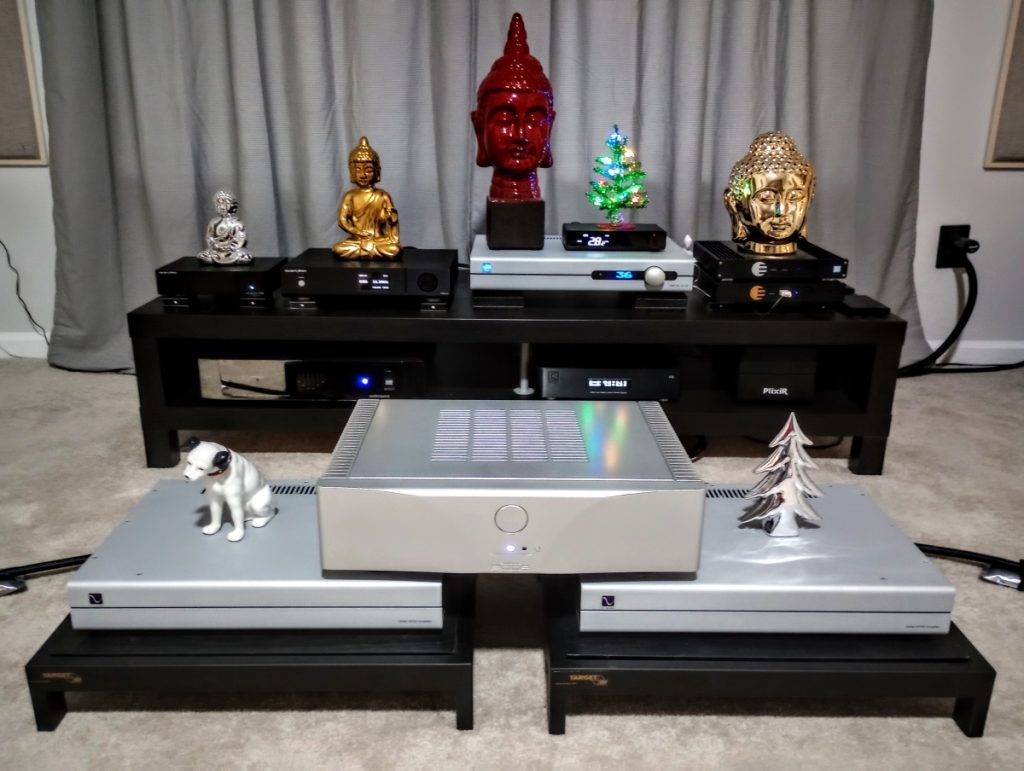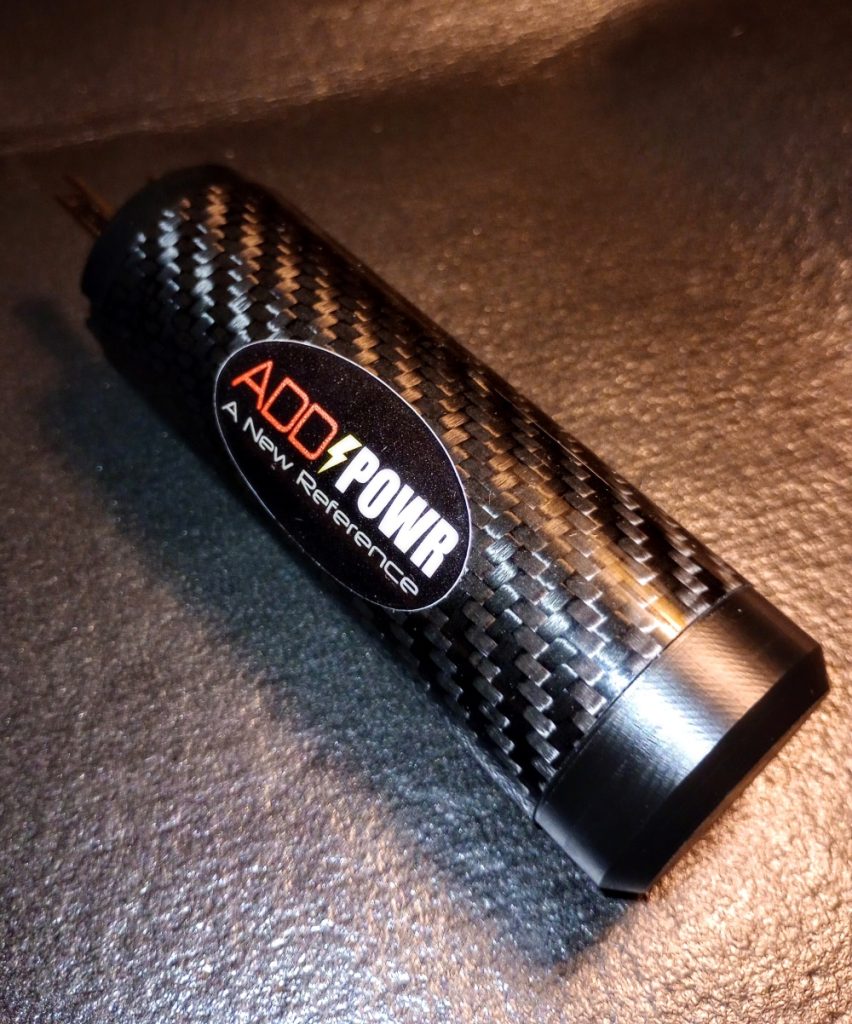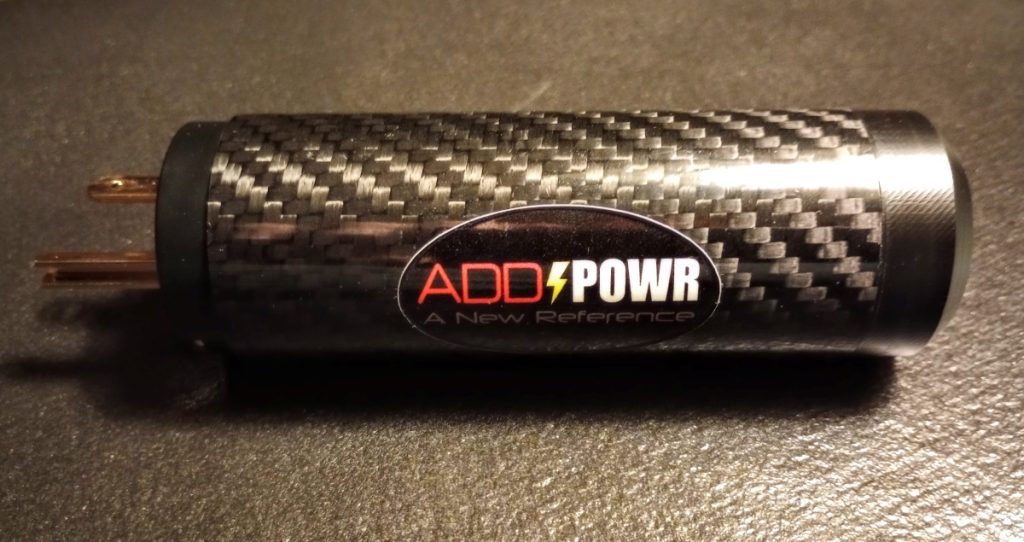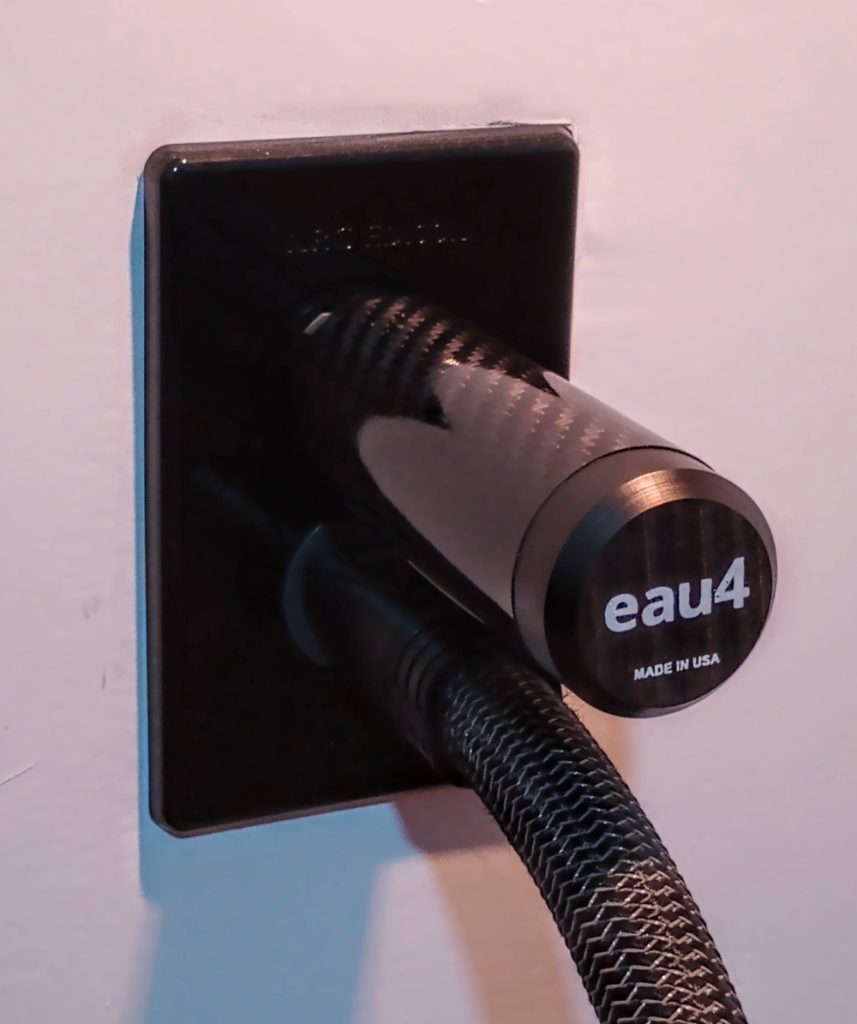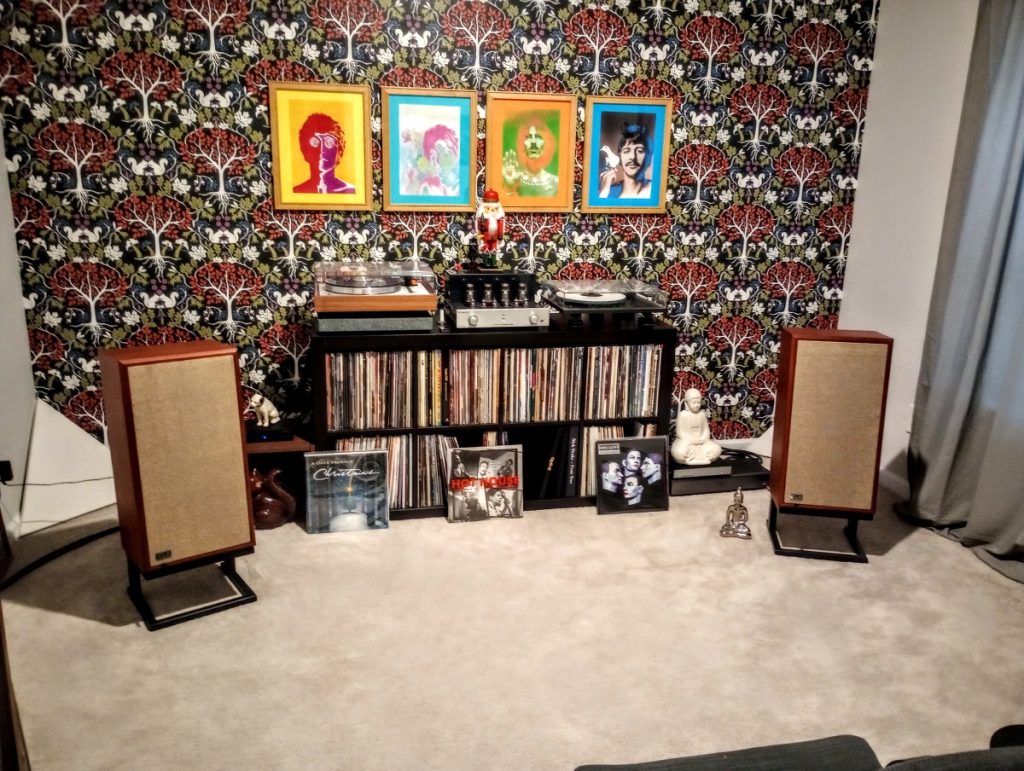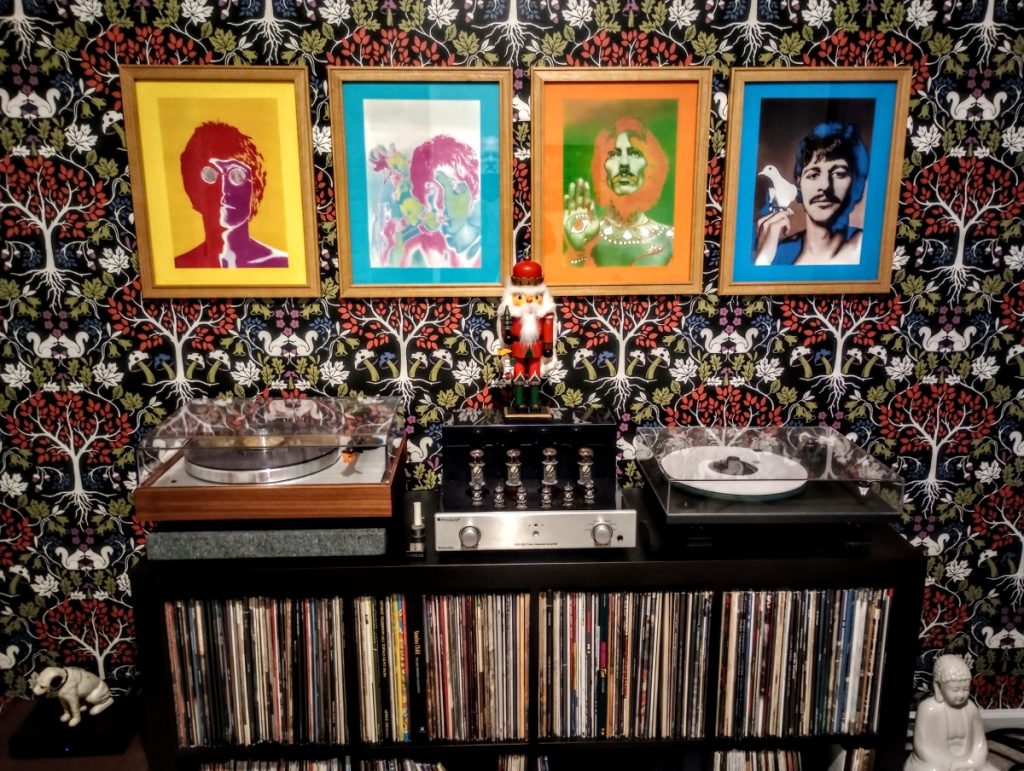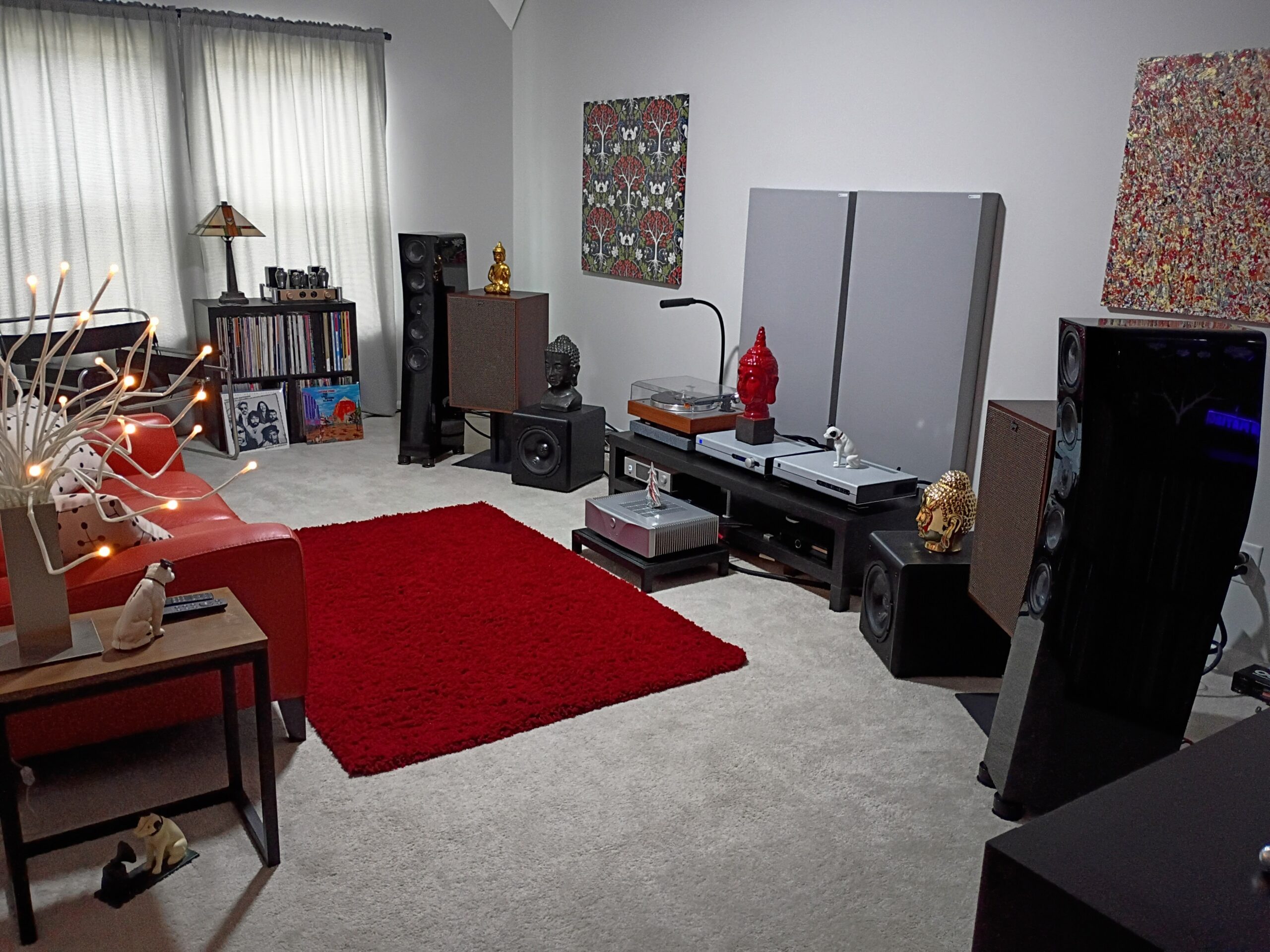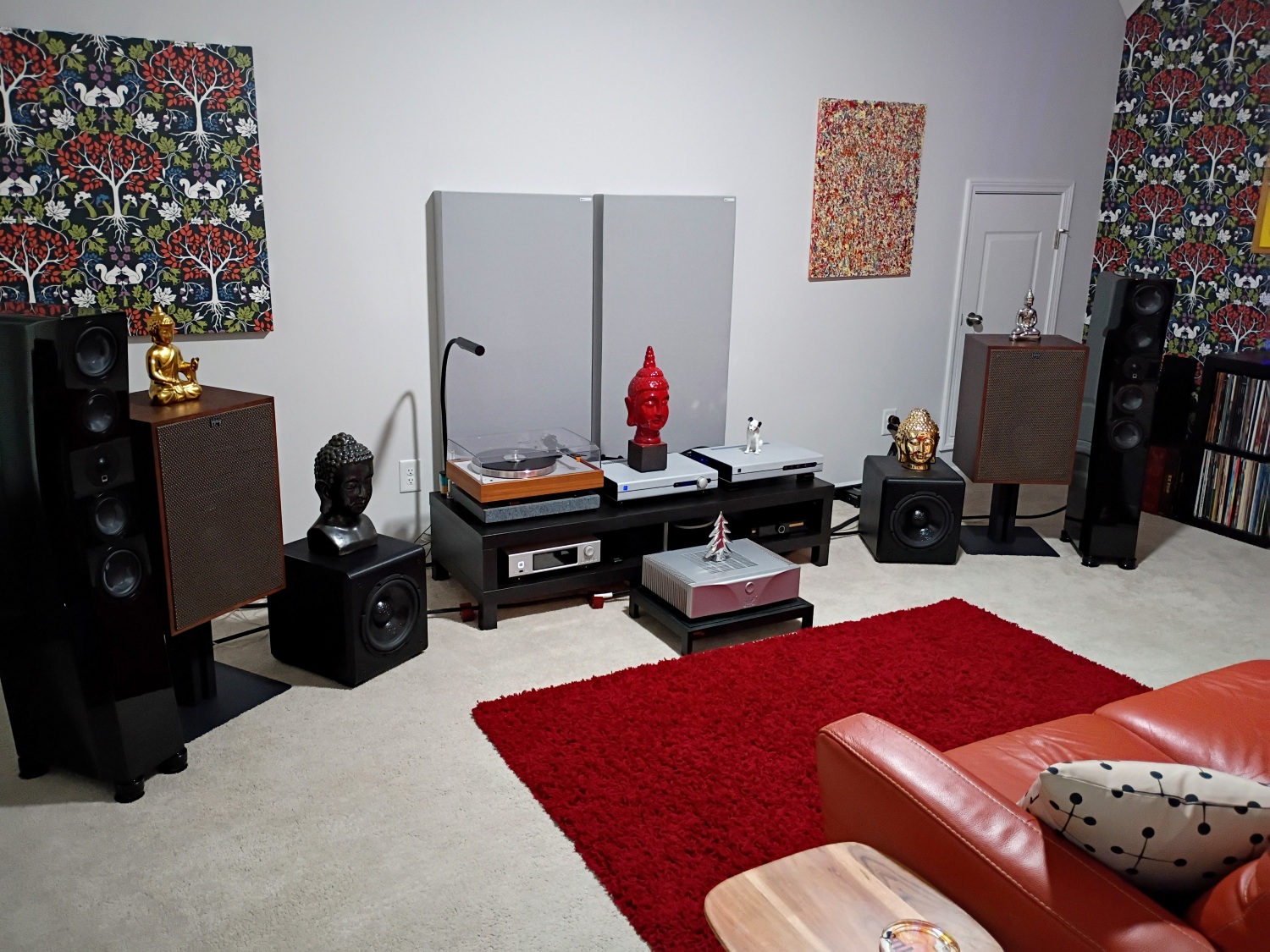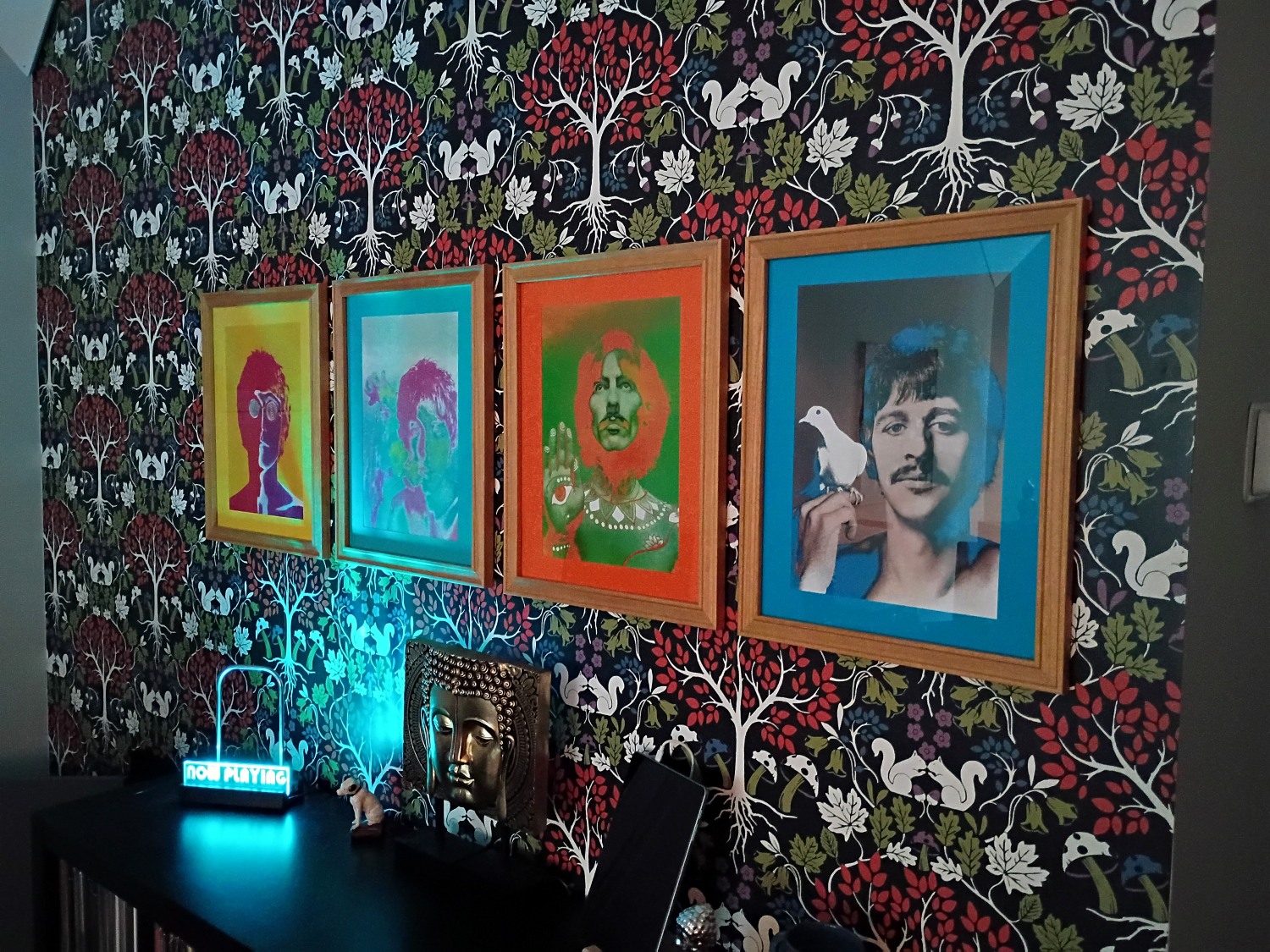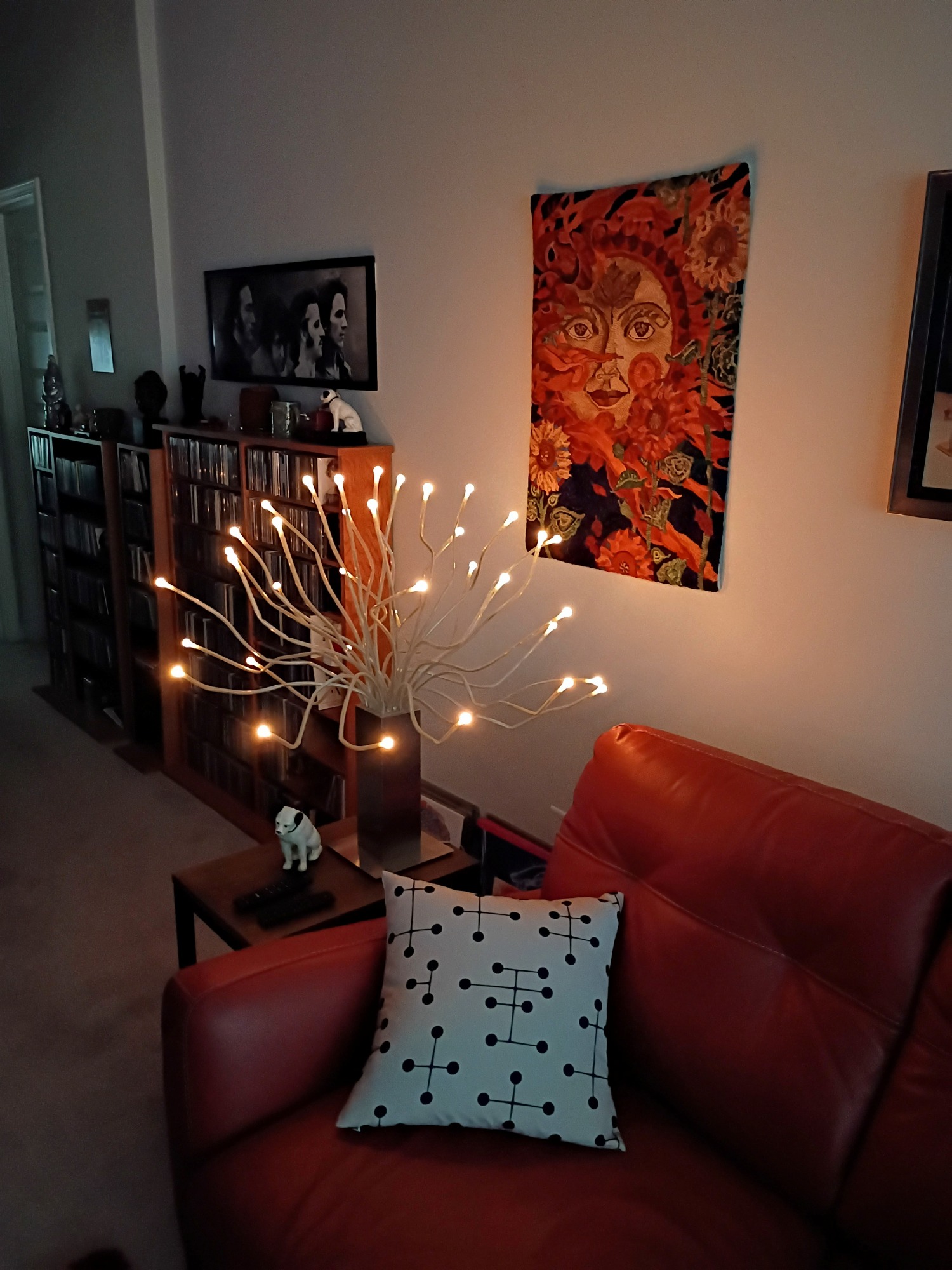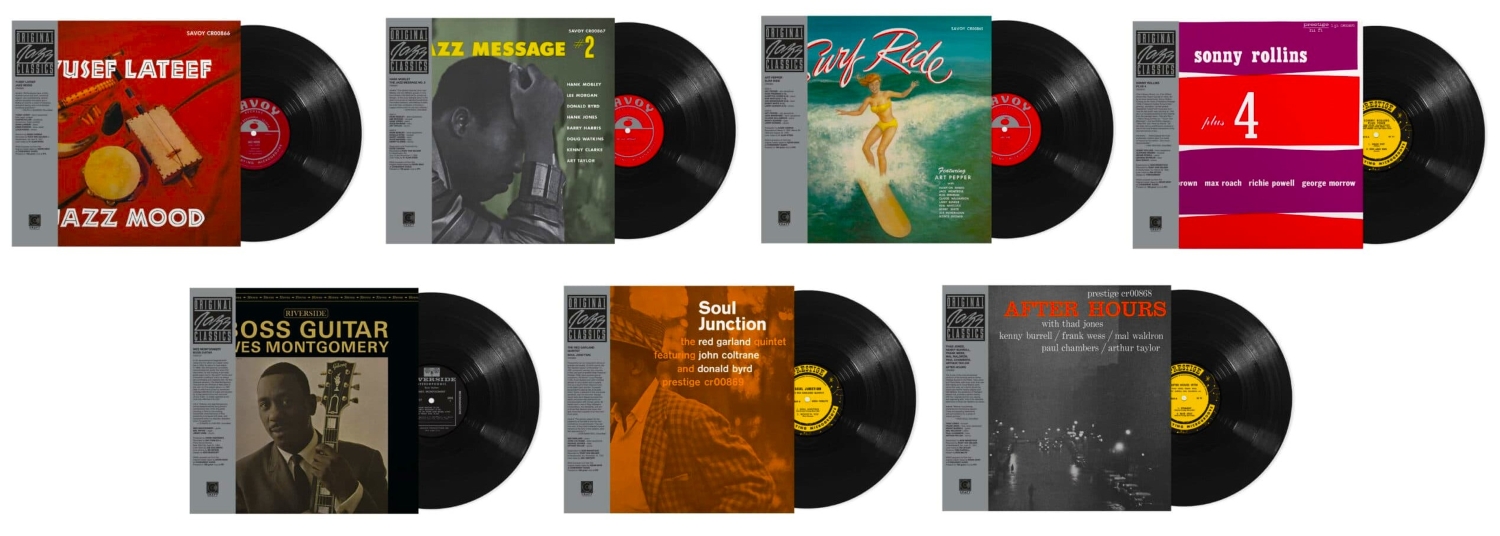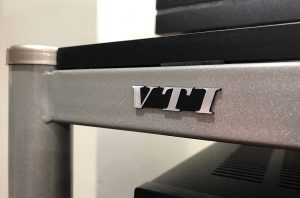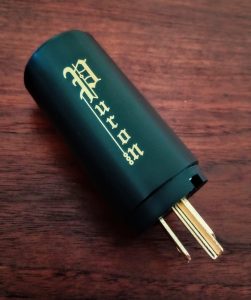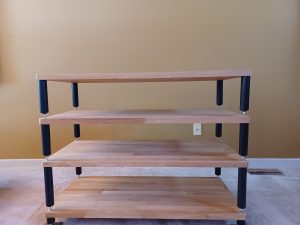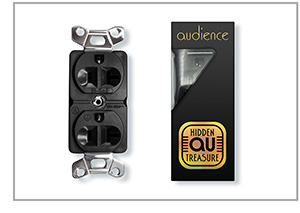A little over four years ago, I reviewed tech guru Bill Stierhout's ADD-Powr Sorcer X2 Harmonic Resonator, which is manufactured in the USA by his company, Coherence Systems. The Sorcer line of harmonic resonators employ a novel approach to improve audiophile AC power conditioning by using an additive process versus the typical subtractive process of most conditioners. Sorcer units work by generating an algorithmically derived, digital electromagnetic square wave signal that's pulsed into the AC power mains; the harmonically resonated energy generated by the unit is then imparted to every device connected to your AC mains. Sorcer equipment also provides additional sonic benefits by radiating harmonic resonance into the listening room environment with a series of built-in, amplified induction coils.
Low band frequency signals generated by the Sorcer X2 re-reference the AC power signal with ADD-Powr's proprietary, sequentially generated algorithmic program. One or two decibels of frequency-specific electrical field energy harmonics are added to your AC power line's energy spectrum; the harmonic resonance provided by the Sorcer works to significantly improve the AC power provided to your equipment stack. Because no filtering of the power function occurs, there's no impact on your system's impedance or your amplifier's peak current capabilities. ADD-Powr stands for Algorithm Digital Defined Power; the company's name actually defines their equipment's function.
The pulsed and radiated harmonic resonance of the Sorcer range of ADD-Powr equipment generates enough signal strength to provide the effect to every circuit emanating from your home's breaker box. And that includes all audio and video sources throughout your home, or anything else that benefits from ultra-clean AC power! I definitely found that to be the case during my original evaluation; I even noticed an improvement in my Samsung 4K television's picture quality. ADD-Powr also claims that the process will increase your system's signal-to-noise ratio by 1 to 5 percent, resulting in a typical energy increase of about .8 to 2.5dB. As I noted in my original review, a 3dB increase in output is roughly equivalent to a doubling of the perceived sound pressure level; that can fairly easily be extrapolated into a potential drop in the noise floor of almost half(!) of its current level. My original evaluation bore those claims out, with my listening experiences exhibiting a vanishingly low noise floor, with remarkably black, noise-free backgrounds. The Sorcer X2 got me much closer to the kind of musical truth I'd been searching for, and it can actually improve the AC power spectrum of your entire home.
While the Sorcer X2 ($3K MSRP in 2019) has been discontinued, ADD-Powr's current range of Sorcer equipment has been expanded and now stretches across five units. The current flagship model, the Sorcer X4+, retails for $4400 (MSRP). You can read my full review of the Sorcer X2 HERE.
About ADD-Powr
ADD-Powr is a brand of Coherence Systems, the current Southern California company of brilliant circuit designer Bill Stierhout, and was founded in 1989 following his move to California. Bill also established Quantum Products in 1999; it was there where his groundbreaking design work resulted in the development of Quantum Resonant Technology, which was originally focused on applications of electromagnetic field effects in biomedical electronics. Bill soon reached the realization that his QRT technology had broad applications in high end audio and professional recording studio environments—particularly when implemented in power enhancement products.
In 2008, audiophile giant Nordost acquired Quantum Products, and Bill's QRT technology has since been employed in a broad array of Nordost QRT-branded power products. Nordost's QRT line has gained great acceptance and acclaim from the audiophile community, and has exposed a much wider audience to Bill's philosophy of additive power enhancement. Not long afterwards, Bill re-entered the high-end audio market under the umbrella of his own Coherence Systems, and the ADD-Powr product line was created to further propagate his designs by drawing upon and evolving the QRT design approach. While at the same time employing radical new design philosophies and evolving technologies in electrical field energy and its application to audio power products.
My New Reality in Sunny South Carolina!
After the review period for the Sorcer X2 ended and the equipment was returned to the manufacturer, I actually enjoyed a period of tremendous growth in the caliber and capabilities of my home audio system. One of the biggest factors was the inclusion of a pair of AudioQuest Niagara Low-Z Noise Dissipation devices (Niagara 1200 and 3000 units). I was also able to incorporate upgraded audiophile AC power cables and a pair of NRG Edison AC power outlets from AudioQuest; the enhanced presentation of my system now offered an improved noise floor and blacker backgrounds, giving new life to my listening sessions. The old Furman conditioner got the boot, and was reassigned to provide AC power to my computer and network equipment table—where it still resides.
But change was in the air, and when I began the relocation process late last year to a new home outside of Charleston, South Carolina, I walked away from the purpose-built audio environment of my dream home in Georgia with no concept of what awaited me when we finally arrived here. It turned out with all the real-estate market craziness of the last year, we ended up with a much larger house than we'd originally planned on (or expected!), and my darling wife Beth graciously gifted the entire second floor of rooms to me for my audio endeavors. I have separate listening rooms set up for a digitally-sourced system, as well as an almost entirely analog, tube-based system I use for spinning LPs. And amazingly enough, despite having little to no input during the construction phase at the new home, the room dimensions and ceiling heights are such that I ended up with remarkably good acoustics in both rooms. It's been a win-win for me, and even though it's taken months on end to get both systems dialed in, I couldn't be happier in the new digs!
The ADD-Powr ElectraClear Eau4 Harmonic Resonators
Earlier this year, I saw an online bit about ADD-Powr that highlighted their current product lineup. They'd been out of sight and out of mind for me with all of my personal and professional craziness of the last four years; reading about them again definitely aroused my curiosity to see (and hear!) if their power enhancement devices might make a difference in my upgraded system(s). I reached out to Bill Stierhout to procure a pair of ElectraClear Harmonic Resonators for this review. The two available ElectraClear models are priced significantly lower than the Sorcer equipment: $500 each for the ElectraClear Eau4, and $250 each for the Eau2 devices. Eau4 units double the produced harmonic resonance effect in comparison to the Eau2, hence the difference in pricing between the two models. ElectraClear models offer a more cost-conscious variety of ADD-Powr's harmonic resonance technology, and are built around a resonator circuit interface that generates its signal referenced to the 60 Hz AC line frequency. While operational delivery of harmonic resonance by the ElectraClear devices is definitely a different process than that employed by the Sorcer equipment, Bill assures me that they're functionally the same. And both ElectraClear models differ from Sorcer equipment in that they don't employ amplified coils to generate harmonic resonance into your system's environment. Bill was kind enough to send a pair of the Eau4 units for evaluation, and they arrived in fairly short order.
Once the smallish, cylindrical devices are plugged into a wall outlet, they proceed to generate and imprint their low frequency harmonic "footprints" directly to the AC power line. Such that everything that's connected to that circuit will benefit from the harmonic resonance generated by the ElectraClear Eau4 unit. ElectraClear devices are encased in elegant, carbon nano-fiber enclosures, are equipped with gold-plated AC terminations, and are available in connector configurations that will work with any international voltage standard. They aren't dissimilar in appearance from devices available from a diverse group of manufacturers such as Nordost, Puron, and iFi. ElectraClear units are completely noiseless and silent during operation; I noted in my original review that the Sorcer equipment generated a small amount of hum, but that was probably a byproduct of the amplified coils inside the case.
I brought the pair of AudioQuest NRG Edison outlets with me from Georgia for reinstallation in the new house; each listening room has a Niagara unit plugged into one of the receptacles of the Edison outlet located behind each equipment stack. All equipment in each respective room is then connected to one of the Niagara units; the remaining receptacle on each Edison outlet has an ElectraClear Eau4 inserted, one in each room. While the ElectraClear Eau4's aren't powerful enough to impact the circuitry of the whole house, Bill tells me that adding additional units will cumulatively improve their effect. For this review, simply having them in place for their enhancement of the audio equipment was more than sufficient.
Use and Listening Tests
Clicking on my name in the header at the top of the page will allow you to see the full contents of my two audio systems; my system components have improved substantially since my evaluation of the ADD-Powr Sorcer X2 in 2019. In addition to all the upgrades in power outlets, conditioning, and AC cables, other changes to my system include the addition of amplifiers from PS Audio and Naiu Labs in the digital room. Along with digital source components from Euphony Audio, DACs from Gustard and Topping, and an external OXCO Clock unit from Gustard. The loudspeakers are Magneplanar LRS+ with a REL subwoofer, and there's also a full suite of new interconnect, loudspeaker, and digital cables from Audio Art Cable.
My analog room features a tube integrated amp from PrimaLuna, along with new production KLH Model Five loudspeakers. With twin turntables from ProJect and Rega; both are fitted with Ortofon cartridges (Quintet Bronze MC and 2M Mono), and play into phono preamps from Musical Surroundings and Sutherland. Along with a new suite of interconnect and loudspeaker cables from Audio Art Cable. To say that the complement of equipment from my first ADD-Powr review to the current one isn't exactly apples to apples is definitely an understatement. That's not to say that the equipment used in the original evaluation was inferior—it's just that the current setup is very different, and definitely more resolving. And when you reach a certain point in high-end audio, the differences made by the addition of new equipment tend to get vanishingly low, and only incrementally better.
An ElectraClear Eau4 is located in each listening room, and I probably forgot to mention that both rooms share the same electrical circuit. That proved to be an important bit of information; after the ElectraClear units arrived, I plugged them in and basically left them there untouched for several weeks for burn-in, etc. An unexpected ear infection (third one this year!) dragged on for about six weeks and basically completely shut me down audio-wise for the duration, and with my constantly running back and forth to help my daughter with the kids virtually every-other day, I haven't been able to spend nearly as much time listening to music for pleasure as I'd like.
So when I actually sat down to critically listen to the Eau4's in each system, my plan was to listen to tracks I know infinitely well, then remove the Eau4 unit from that system and take another listen to attempt to identify differences in the sound. And I also listened to the same tracks I used for the original Sorcer X2 evaluation, since I still had a clear frame of reference for them before-and-after. Unfortunately, that wasn't working at all for me; I'd unplug the Eau4 in the digital room, then repeat listen, then re-plug the Eau4, and I couldn't tell any difference in the sound. At all. This went on for days, until I came to a sudden realization—both rooms share the same circuit, so even though I removed the Eau4 in the digital room, the Eau4 in the analog room was still active. And with the two rooms adjacent to each other and on the same breaker, the effect was strong enough that removing one Eau4 had virtually no impact on the sound while the other was still inserted.
That's a good thing to know: despite the rather diminutive size of the Eau4's, they apparently do a good job of providing harmonic resonance that's effective across a fairly large area of square footage. Completely removing both Eau4's from the circuit definitely made a perceptible difference—though not on par with the level of effectiveness I raved about with the Sorcer X2 four years ago. The differences weren't as night-and-day as in my original review, but with the upgrades in equipment across just about every possible parameter, including upgraded amps, digital source equipment, loudspeakers, power conditioning, and cables—that's a ton of variables to take into consideration. So I'm basically evaluating the effectiveness of the Eau4's on their own merits, and not in comparison to the Sorcer X2. I can't help but wonder if the Sorcer X2's broadcast of harmonic resonance via their complement of built-in coils might have been the difference maker here. Regardless, at this level of playback, any changes engendered to your system by any additional equipment will very likely be incremental, at best.
Yes, the focus here is on reduced AC line noise and the benefits that come from having a significantly lower noise floor and blacker backgrounds. Those considerations alone increase the opportunity for you to hear a musical presentation that possesses greater clarity and an improved level of fine detail. The effect created by the addition of harmonic resonance to the AC inputs of your entire equipment stack is a cumulative one, beginning with reduced blurring of music signals during playback, whether from digital or analog sources. Additionally, you're able to hear through to the music with improved clarity, and also experience an improved stereo image, greater midrange liquidity, and improved dynamics. Music playback with the ElectraClear Eau4's in the system exhibited a greater degree of effortlessness, and gave a more tangible impression of the realism of listening to live music. My loudspeakers—especially the Magneplanars, which tend to disappear in the soundfield anyway—drew even less attention to themselves, and the music seemed more fully formed, projecting a more believable soundstage.
Conclusion
I wasn't sure if the ElectraClear Eau4's would make a big impact on my new audio system setup, but based on my previous experiences with ADD-Powr products, I was certain any difference would at the very least be a positive one. The Eau4's could be considered "harmonic resonance lite," especially when you take into account that their harmonic signal generation is somewhat different from the process employed by the Sorcer units. But my impressions of the ElectraClears were buoyed by the ability of a single device to work its magic on an entire electrical circuit, despite being a significant distance from one of the systems sharing that same circuit. That alone proves to me that ADD-Powr's concept of taking the harmonic resonance effect all the way to the breaker box—and back again—isn't just marketing hyperbole. It actually works, and spreads the effect to everything connected to that circuit, and probably beyond. Very impressive for a product with only a $500 MSRP!
I've been awed over the last couple of years by how much the AudioQuest NRG Edison and Niagara equipment has enhanced my music playback. But the addition of ADD-Powr's lower-echelon ElectraClear Eau4's provided the icing to an already good system setup, and the harmonic resonance they add has definitely lifted my music playback to the next level. Many thanks to Bill Stierhout for his ongoing support and for the opportunity. It's a definite: ADD-Powr's ElectraClear Eau4's are here to stay, and come very highly recommended!
ADD-Powr ElectraClear Eau4 Harmonic Resonator
Retail: $499.95
ADD-Powr, distributed by Coherence Systems
All images courtesy of Coherence Systems and the author






